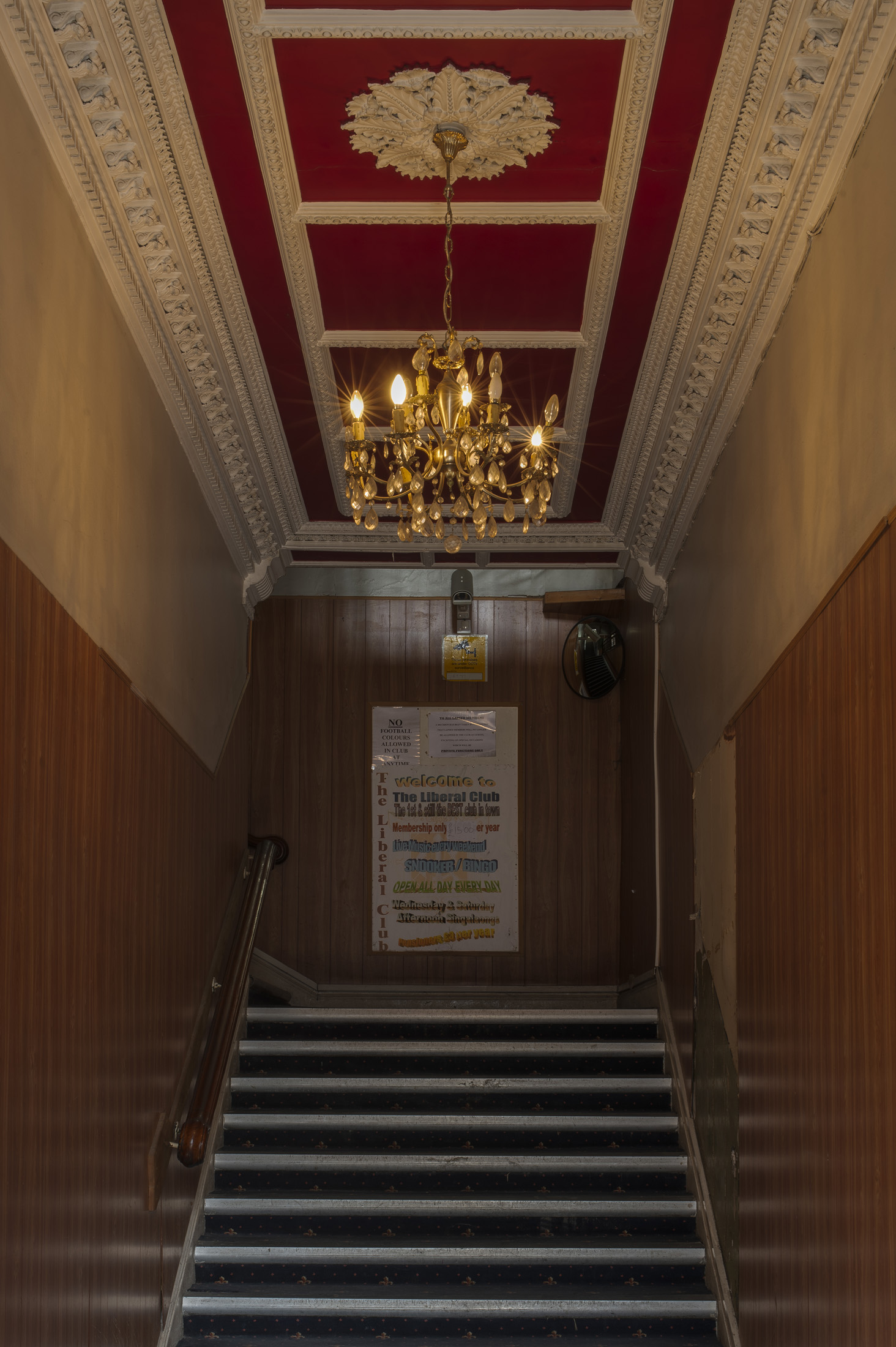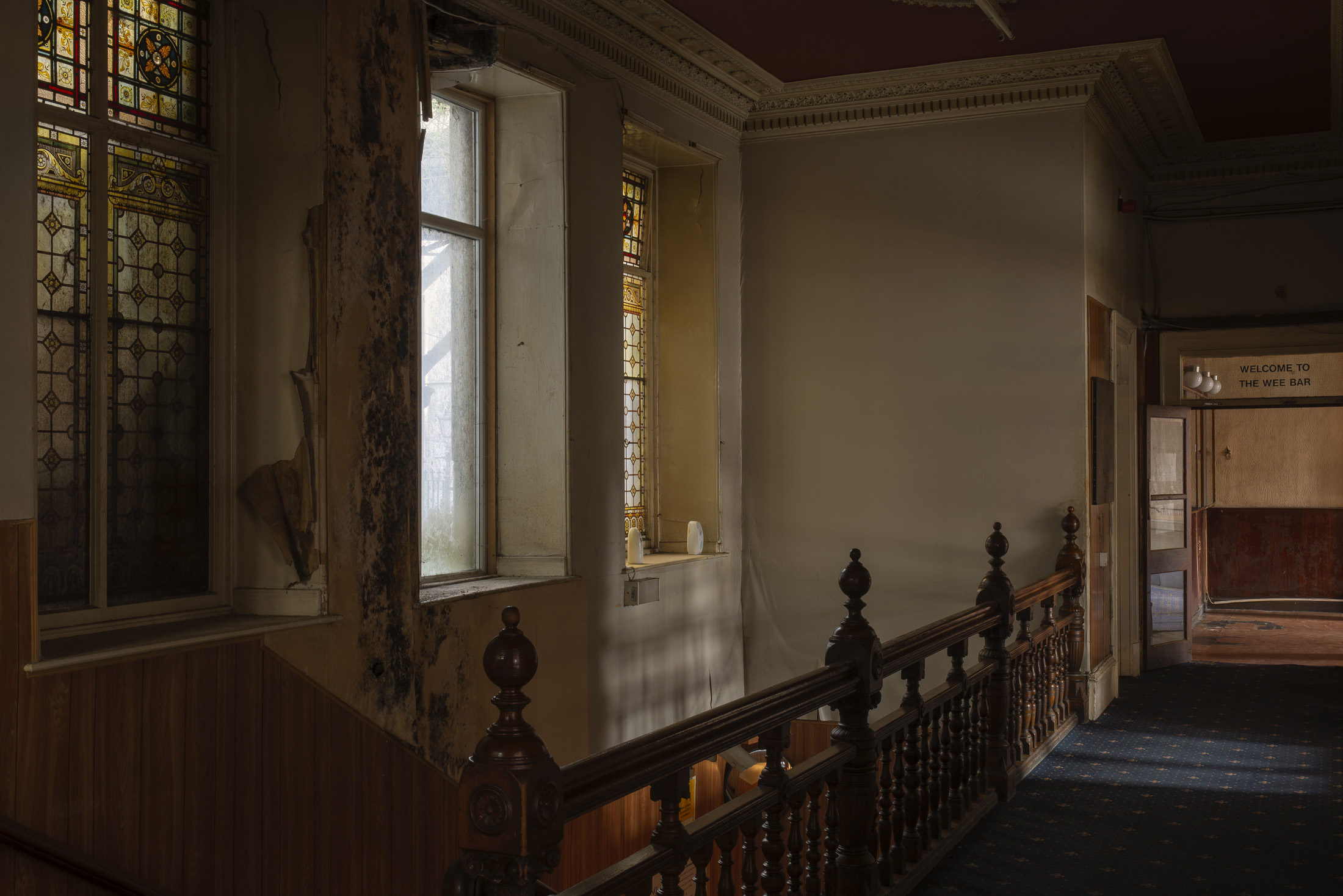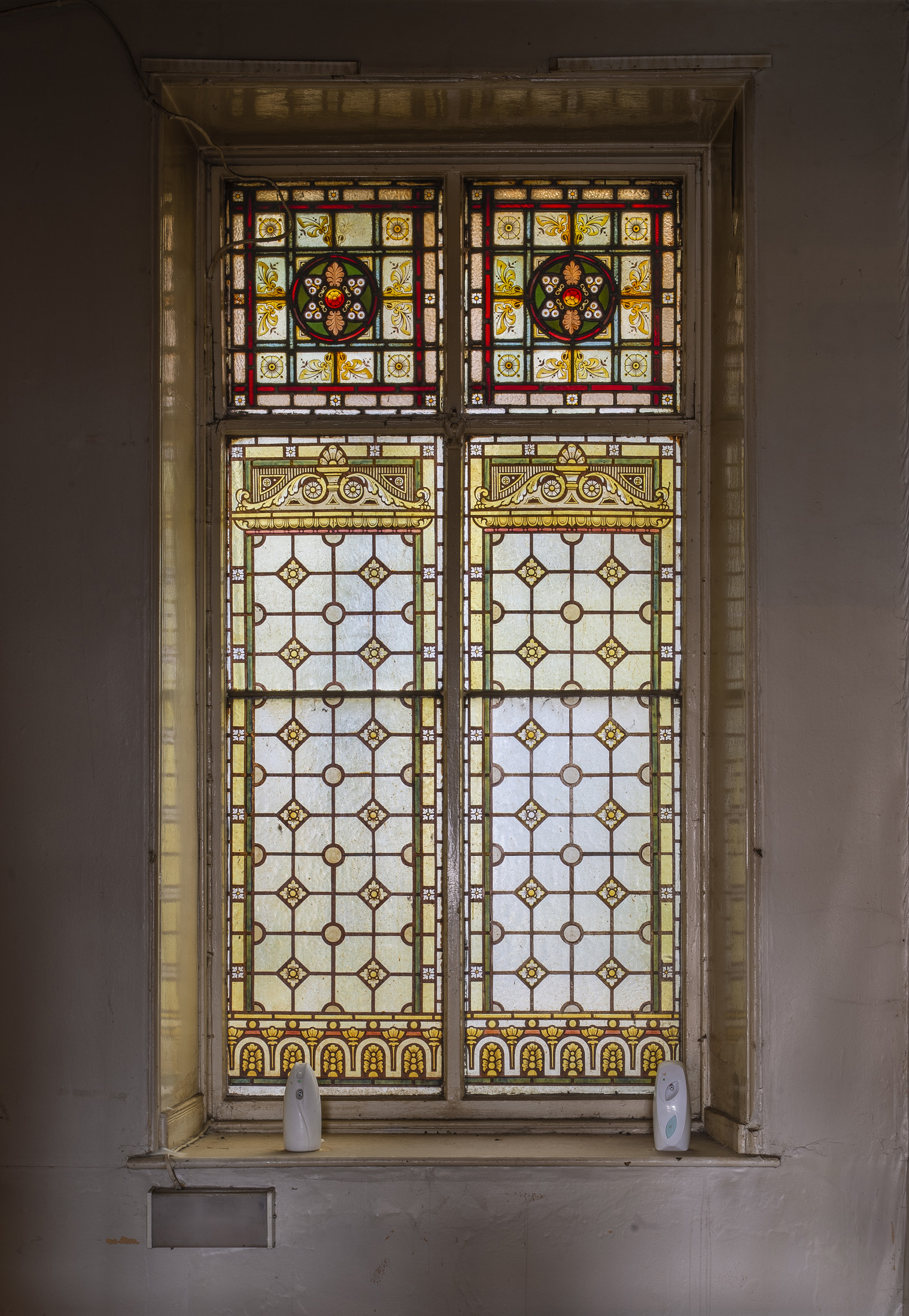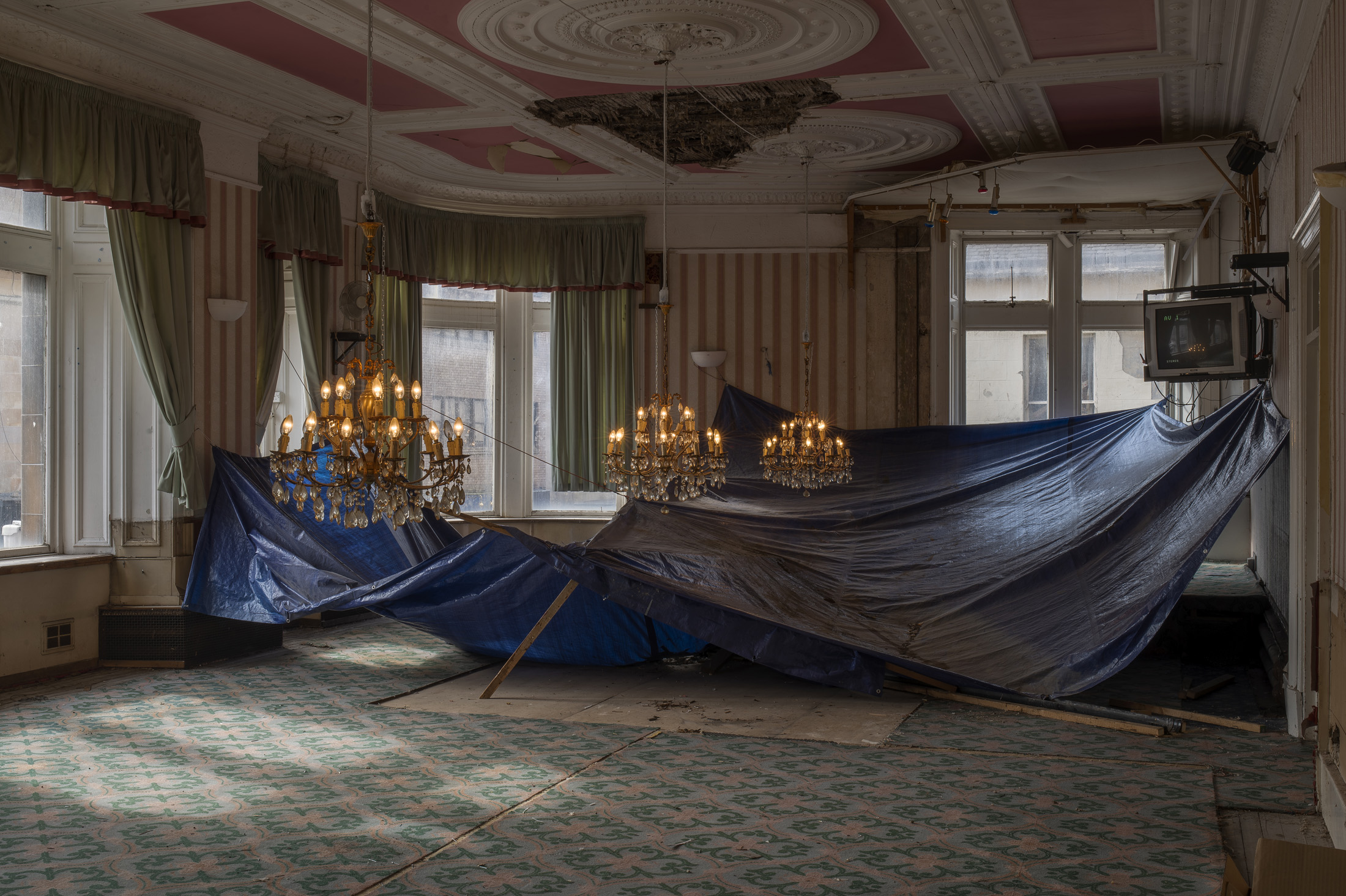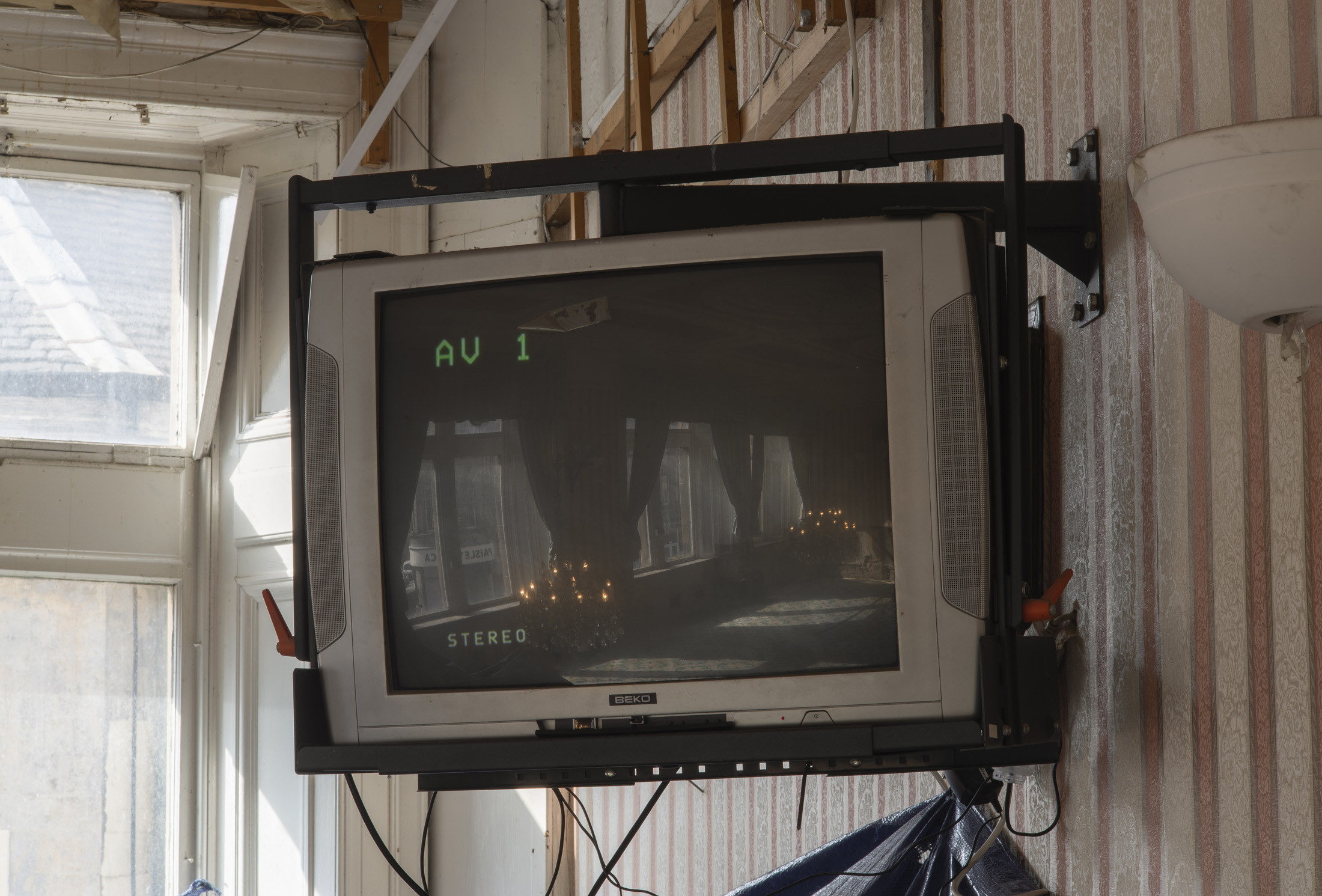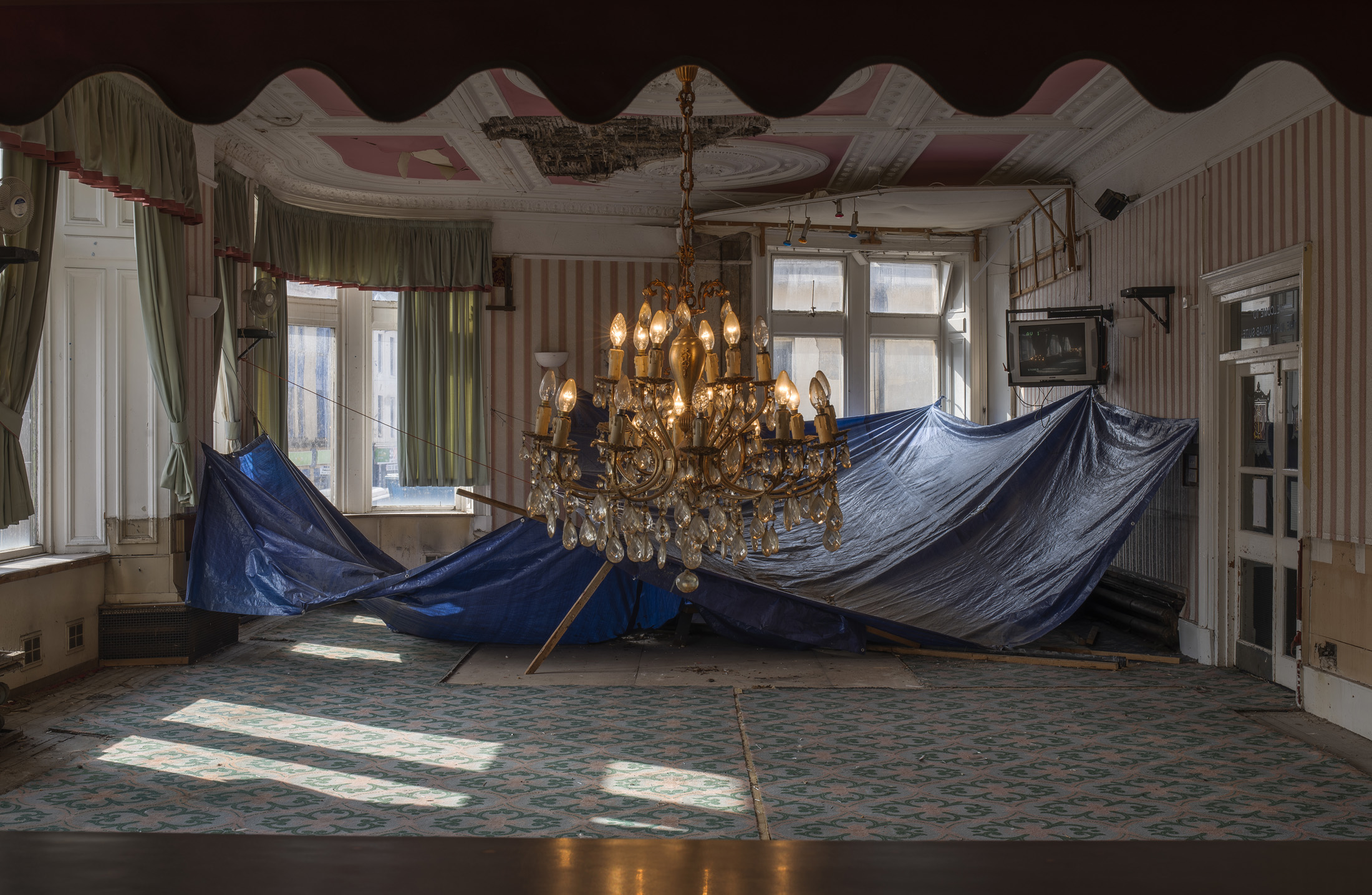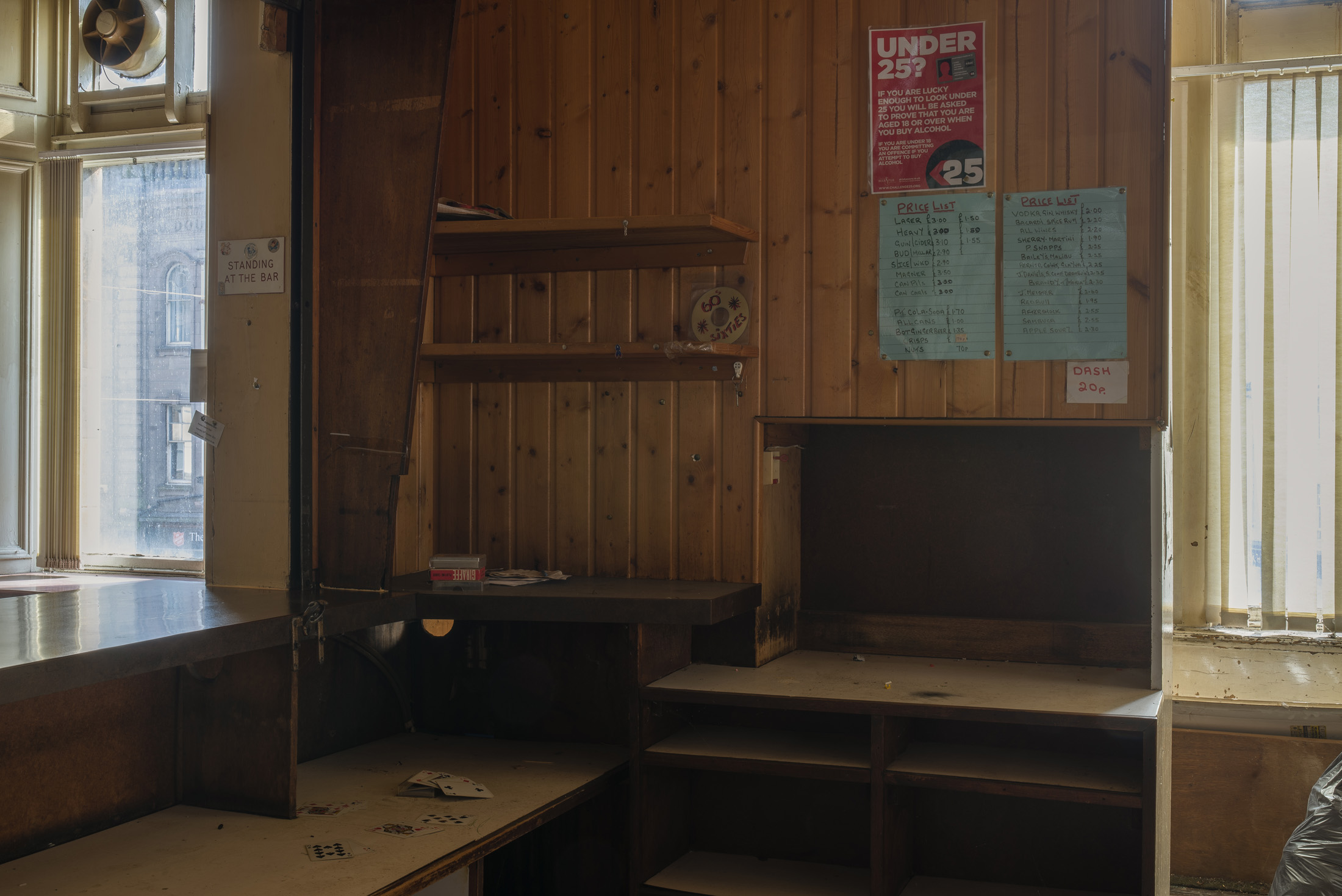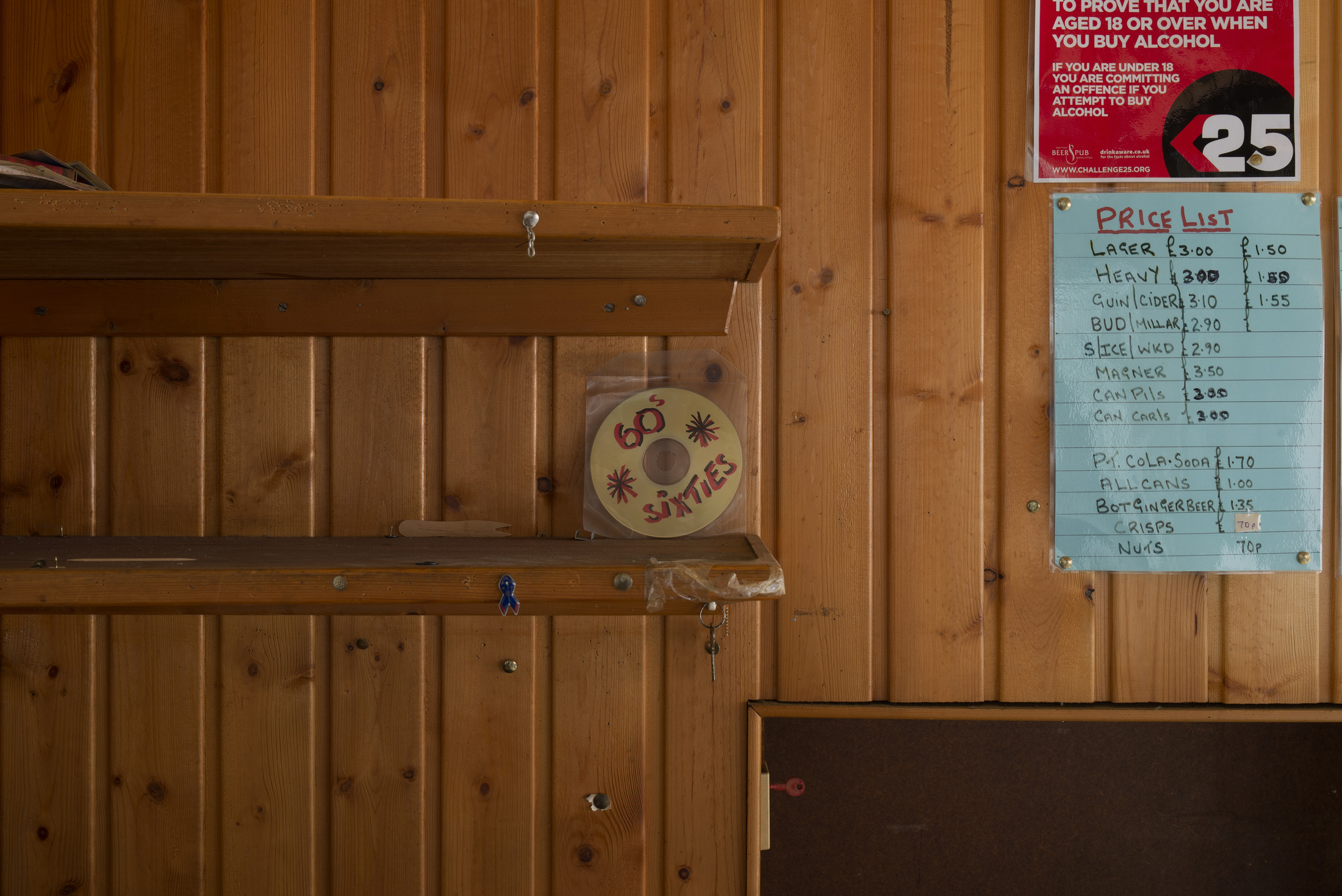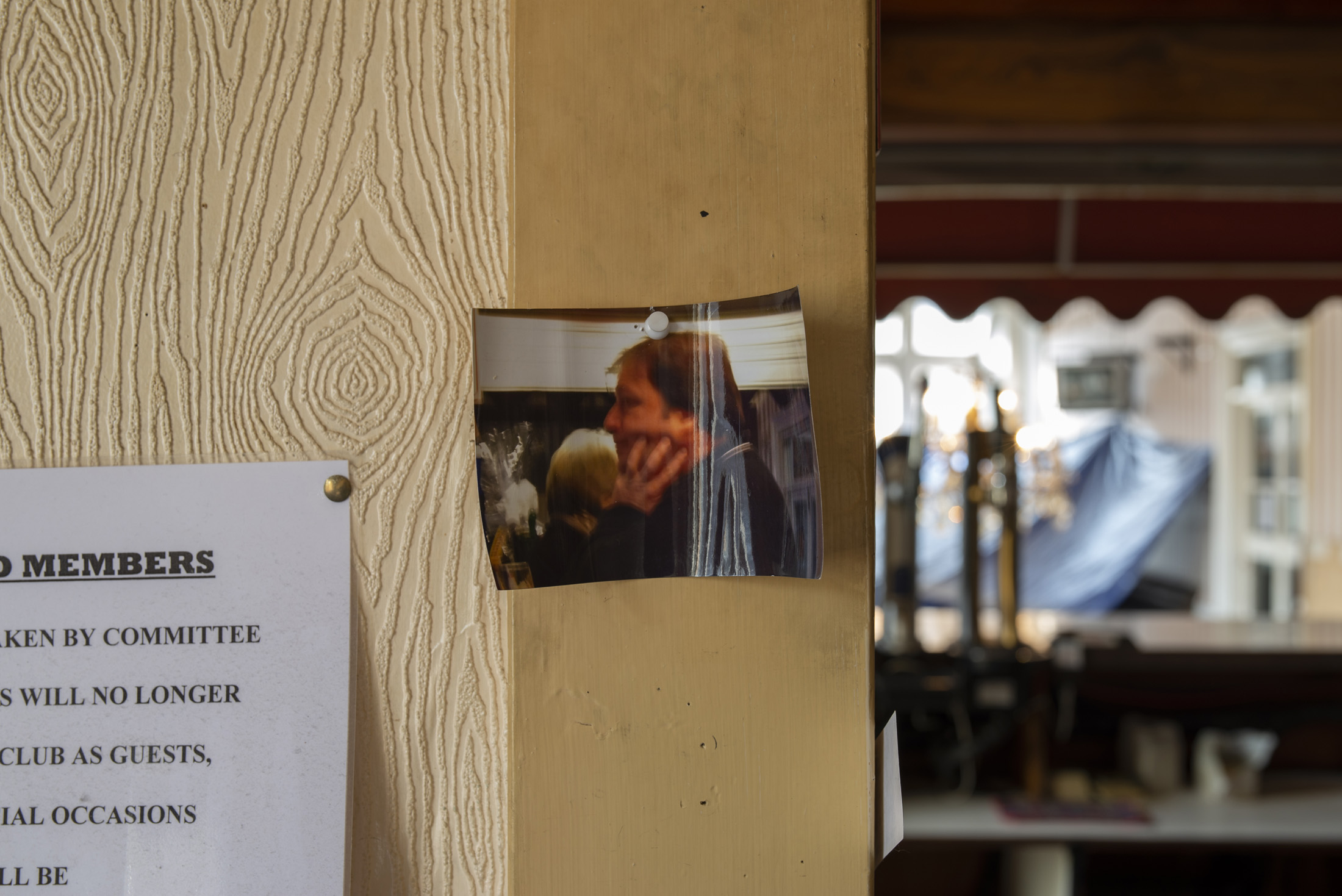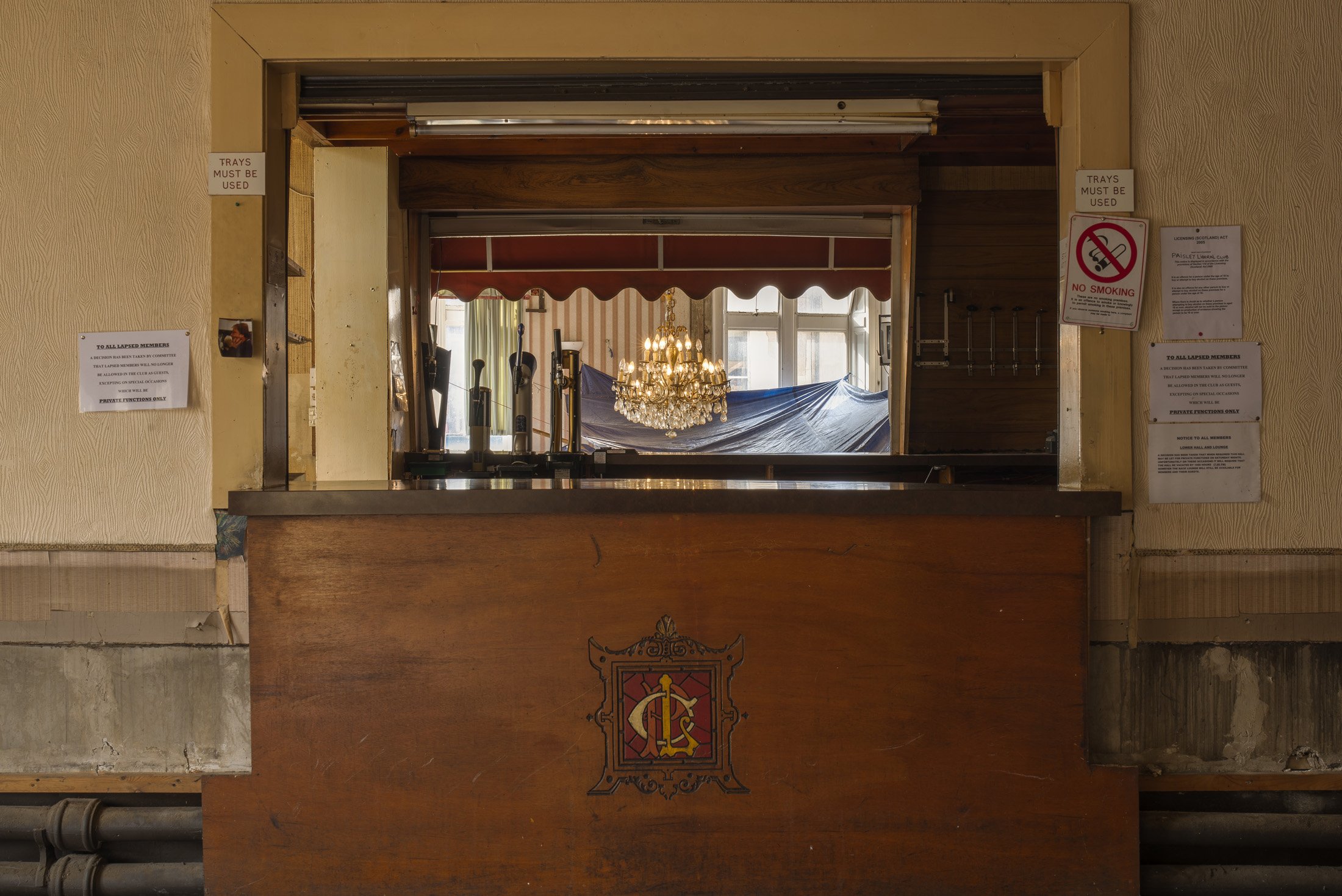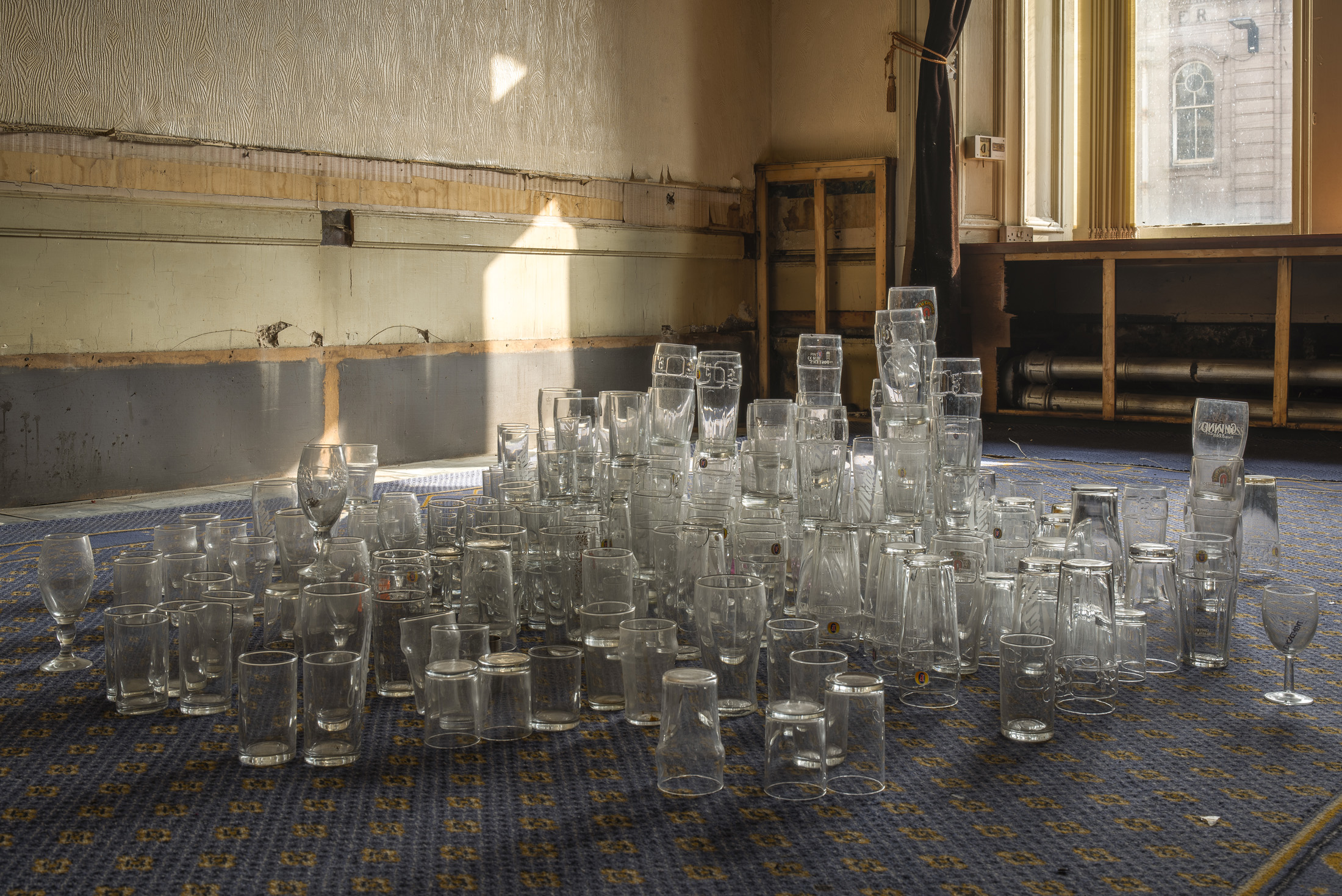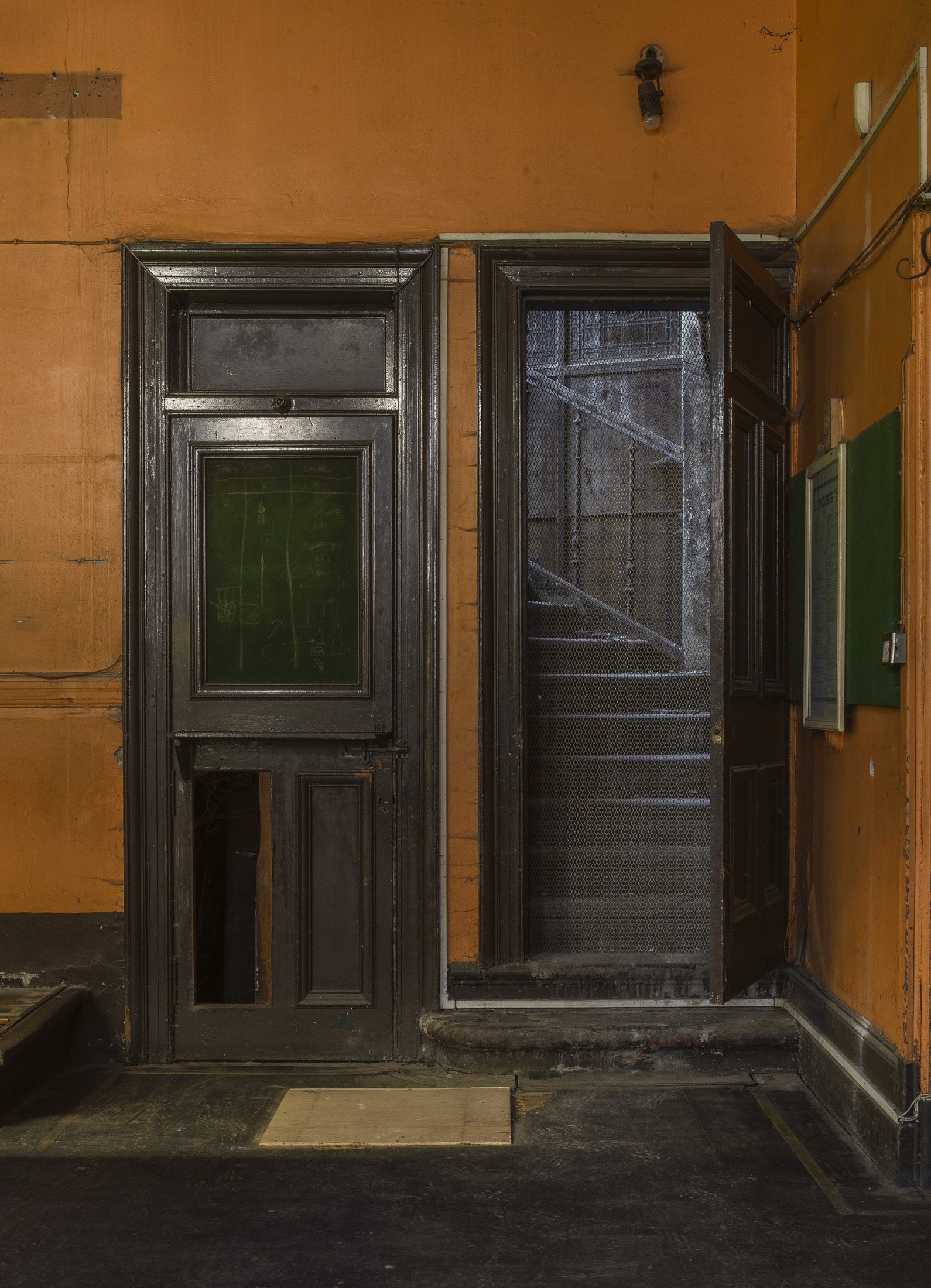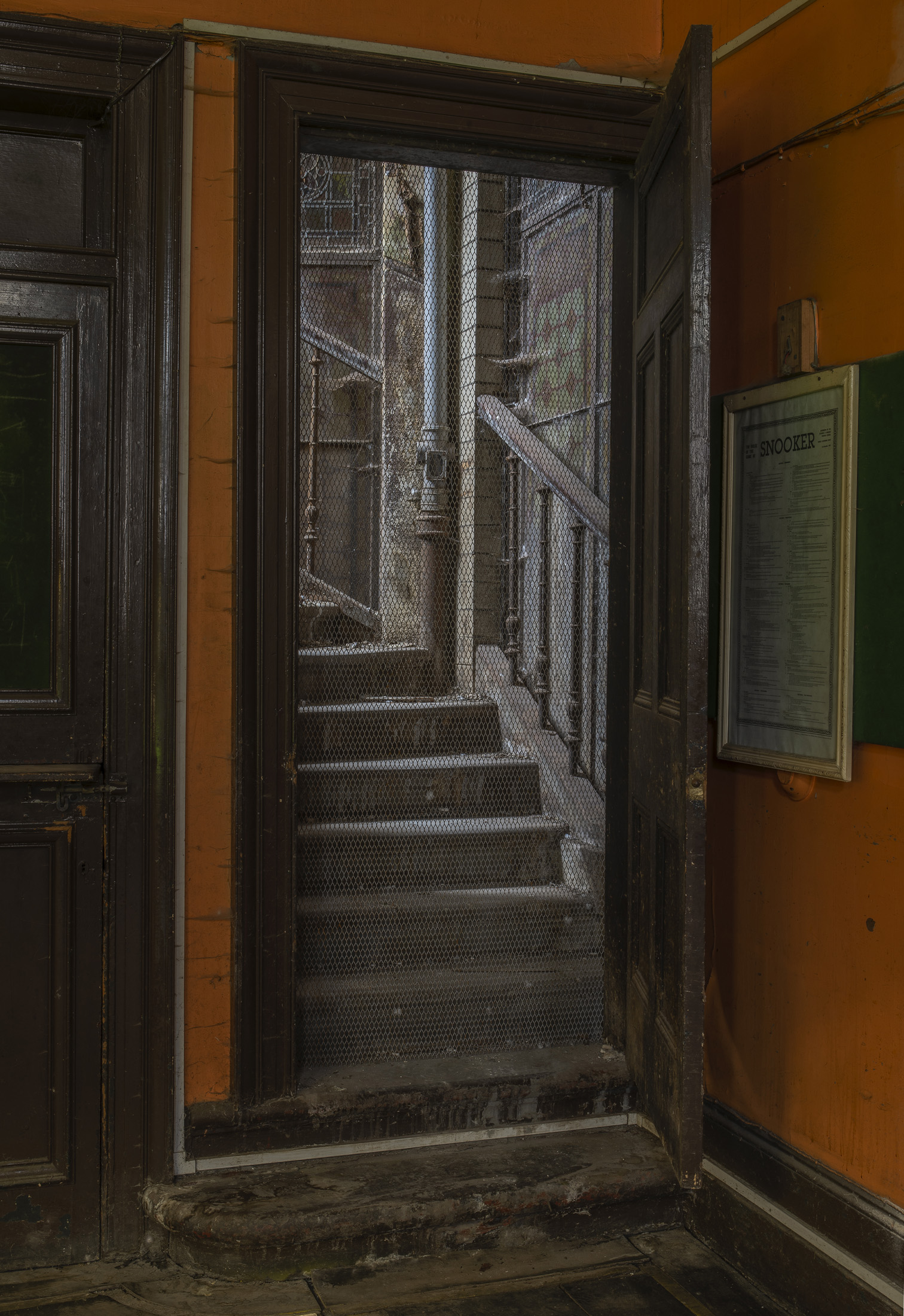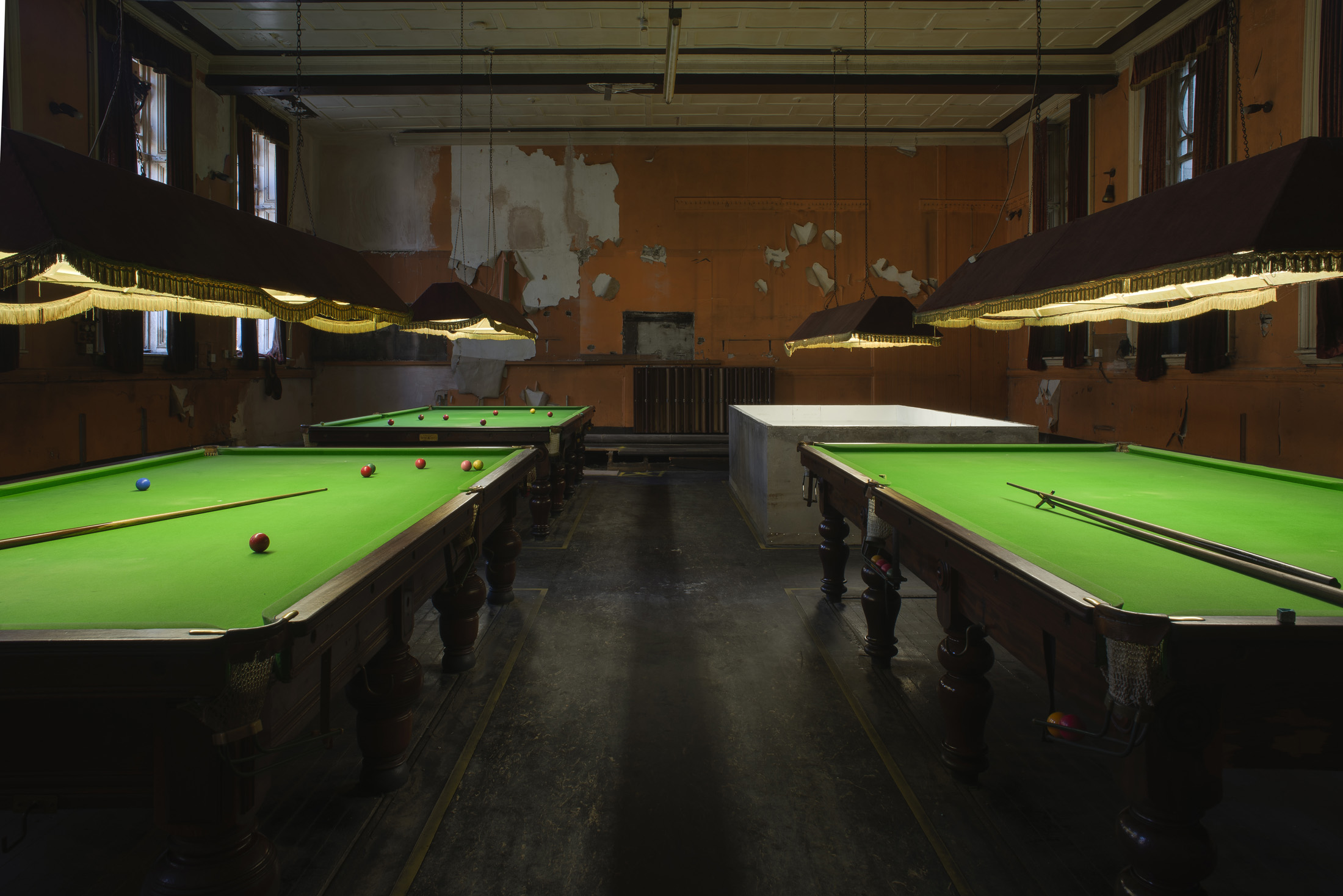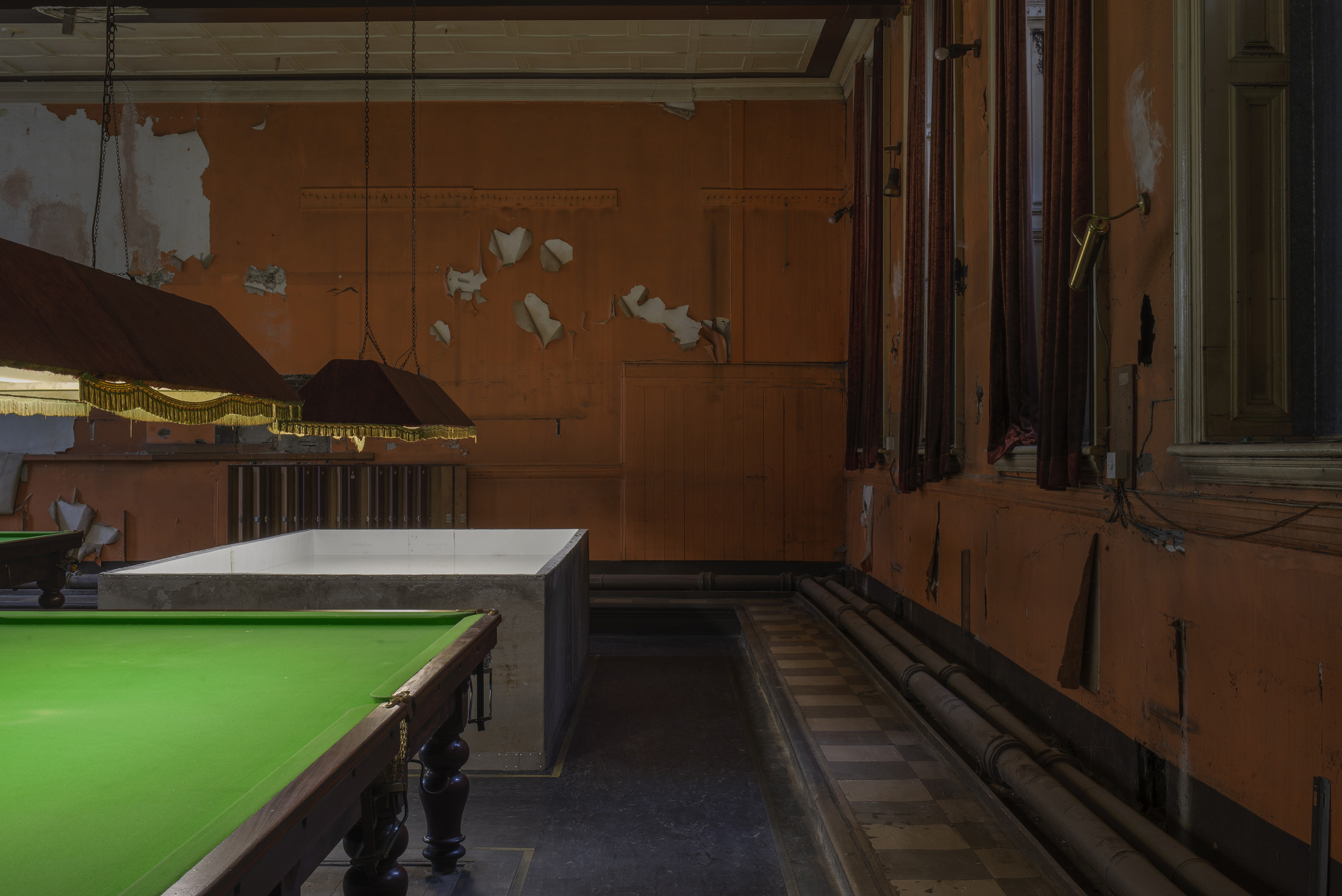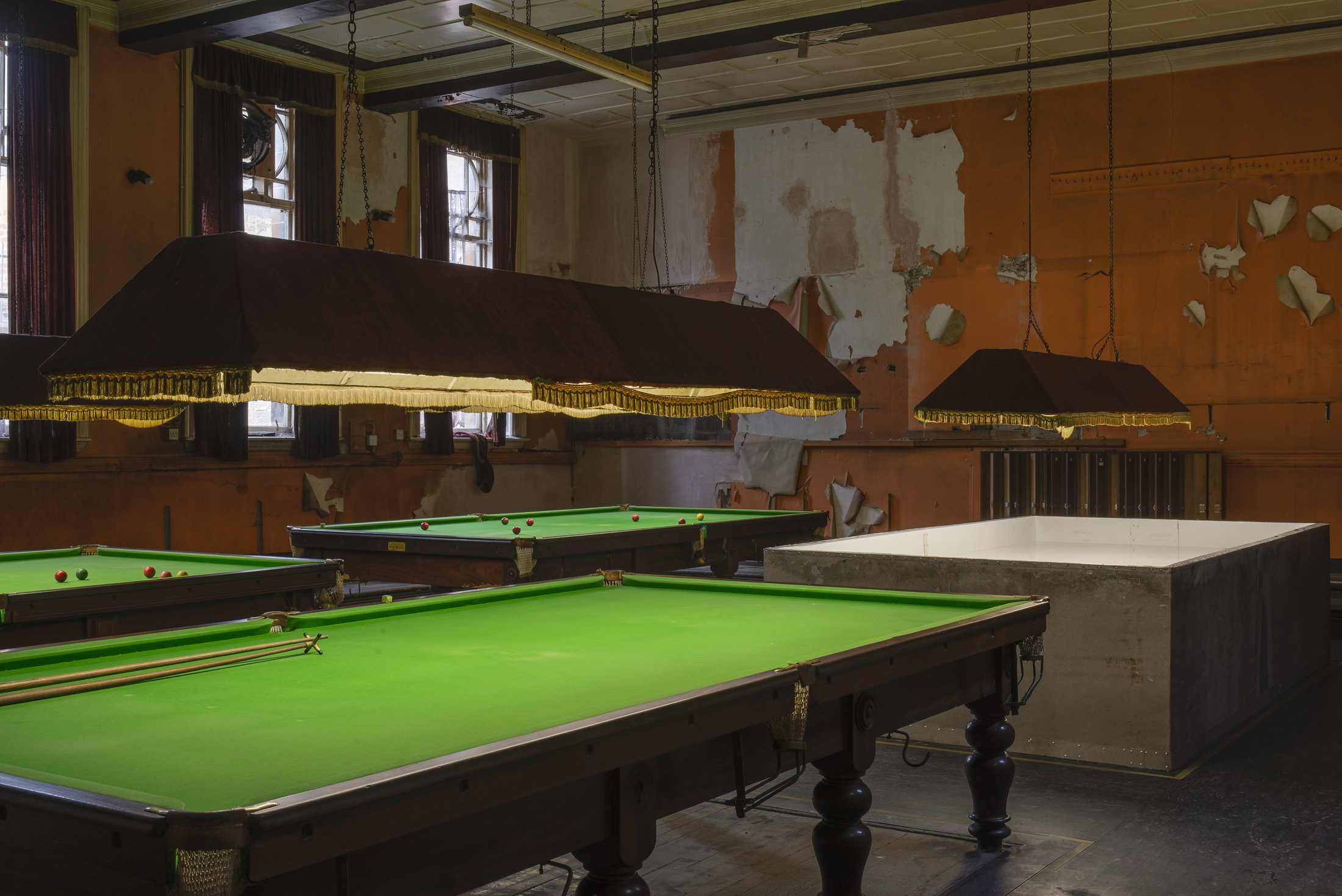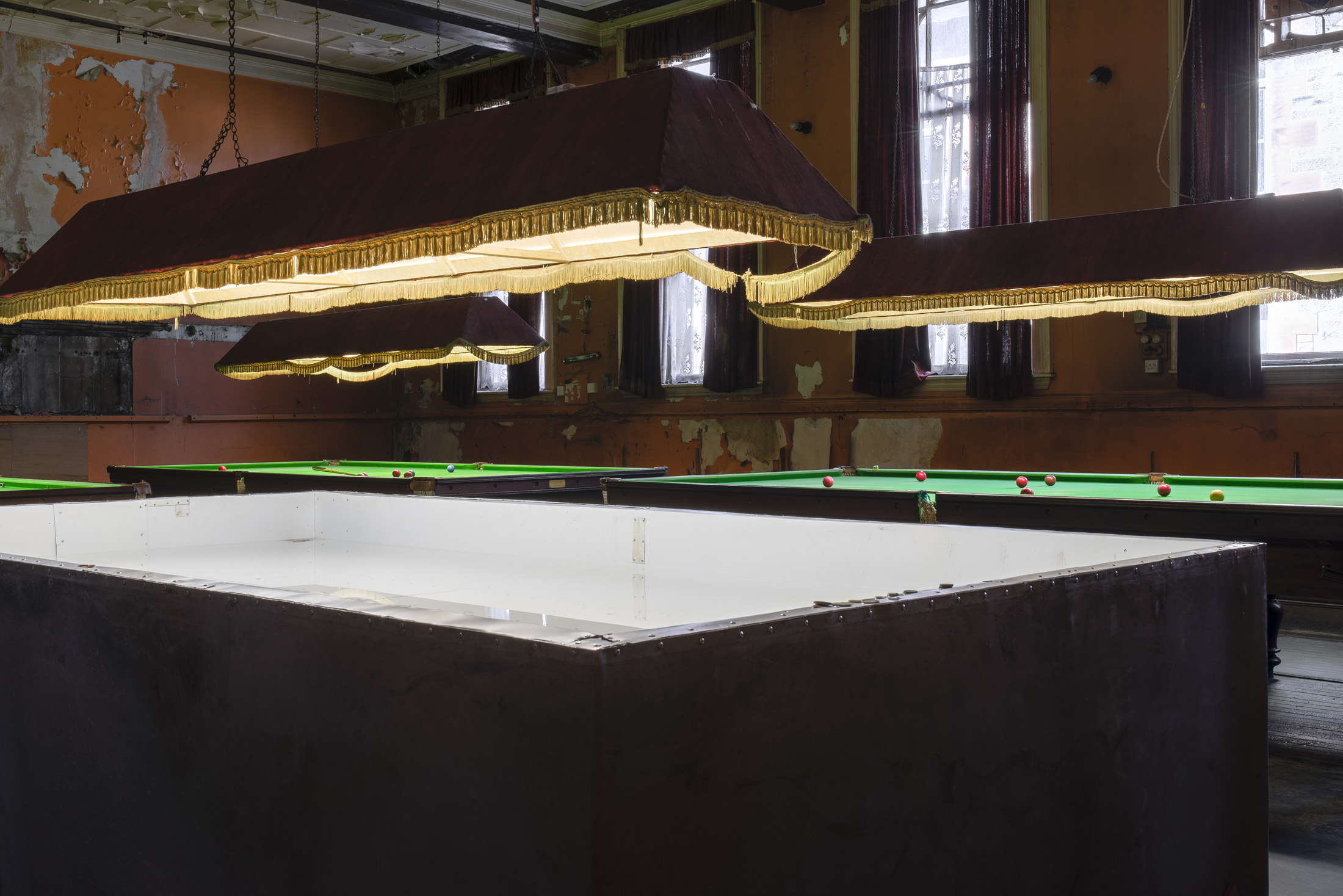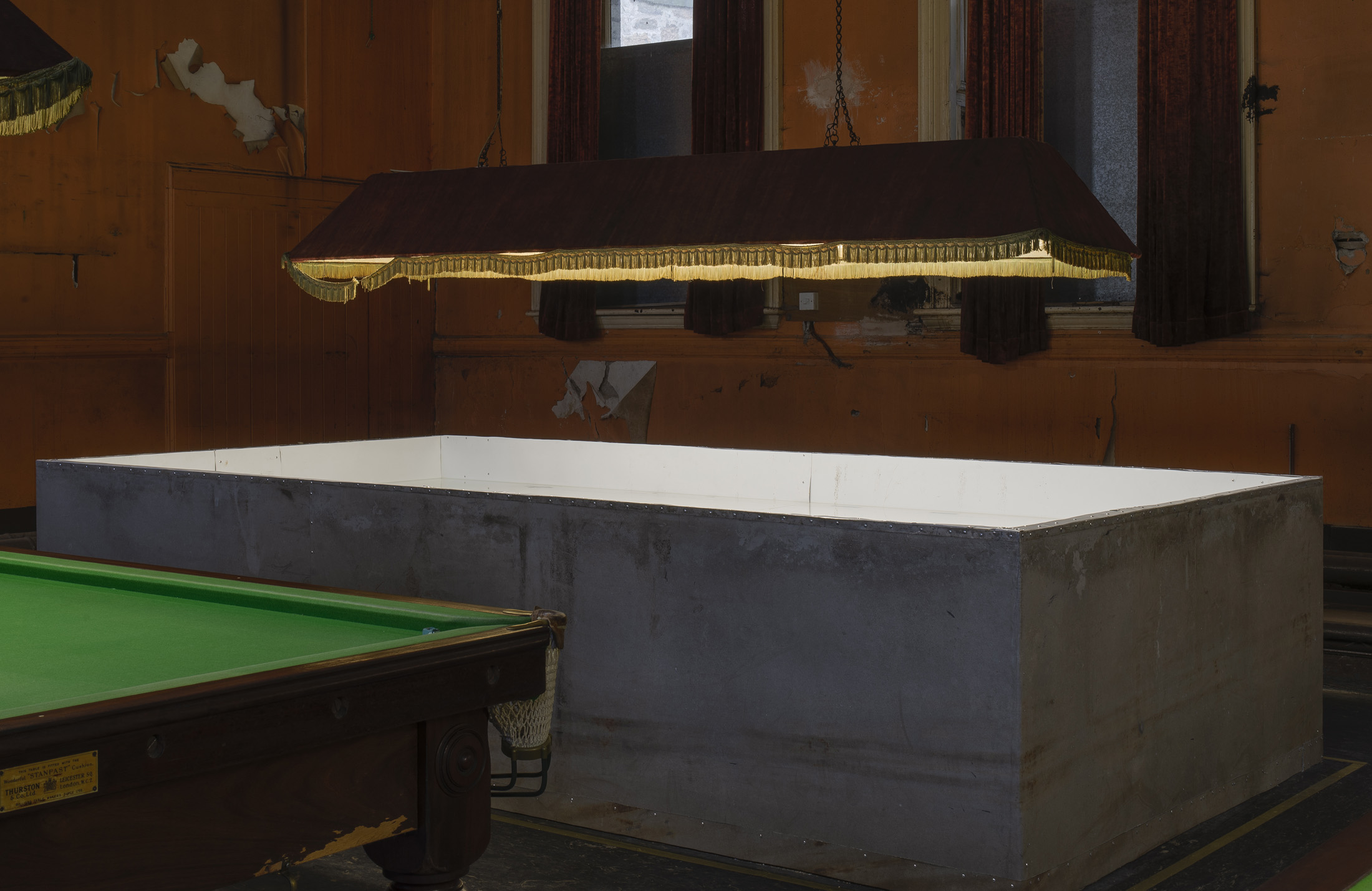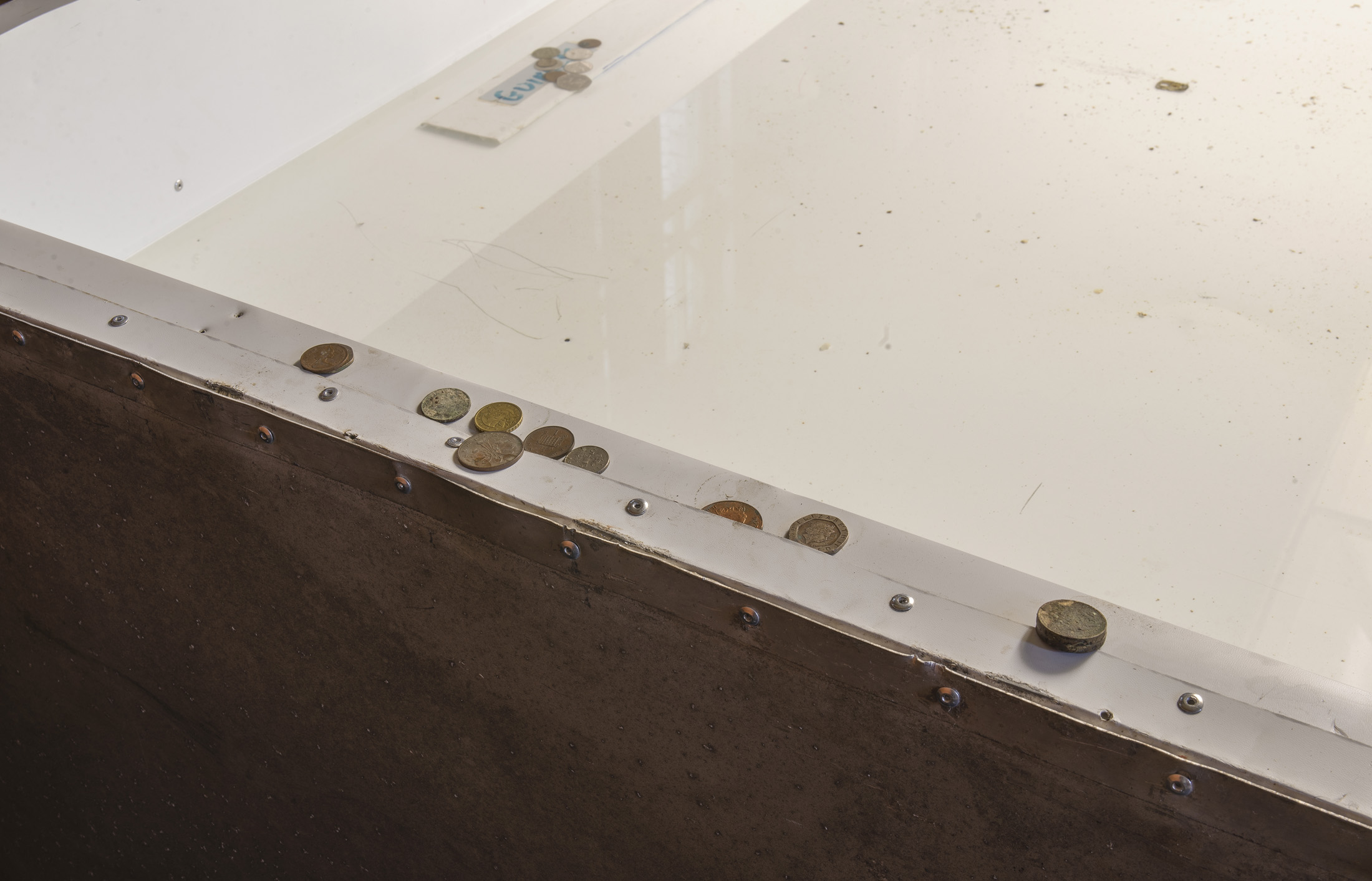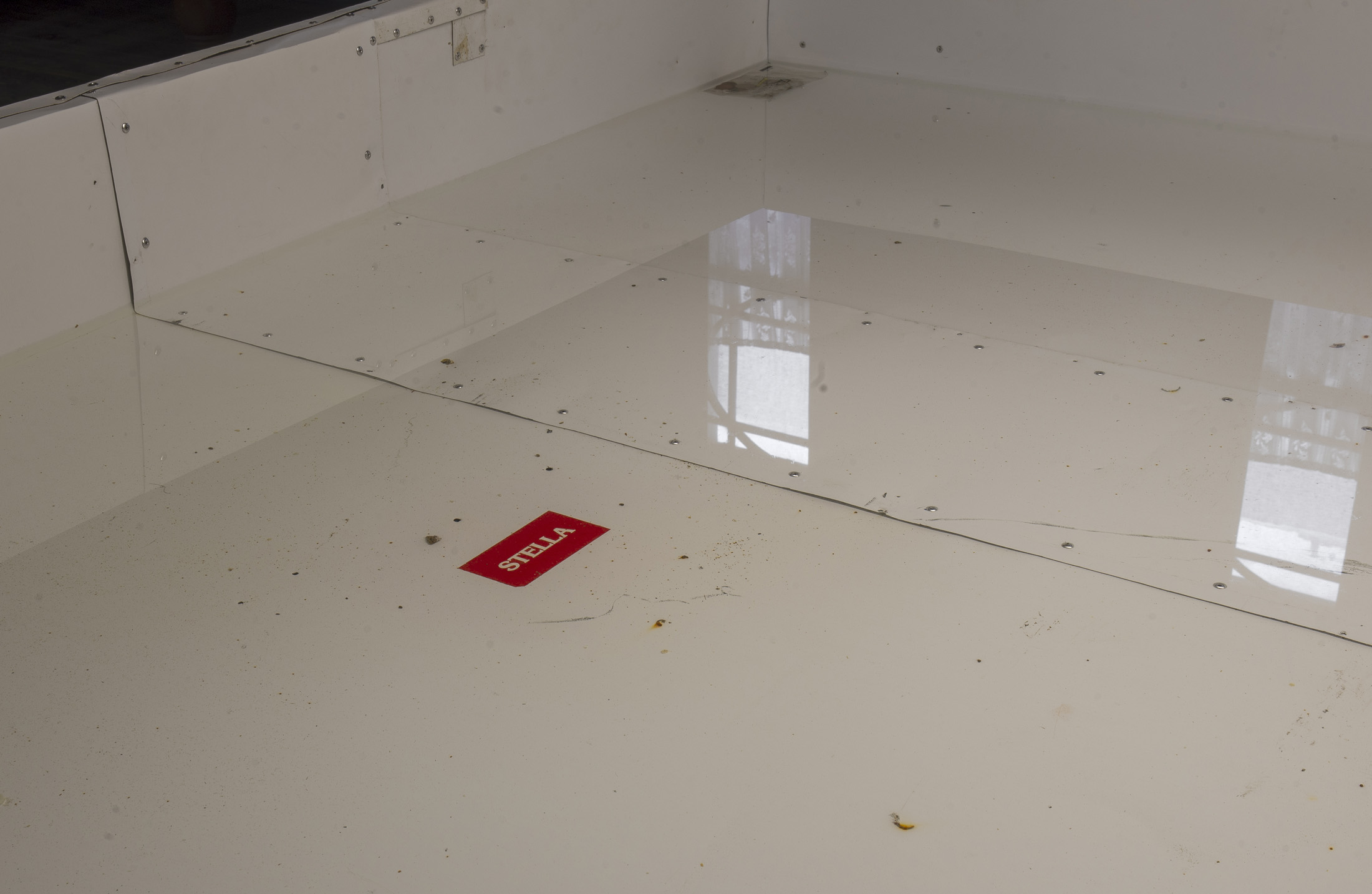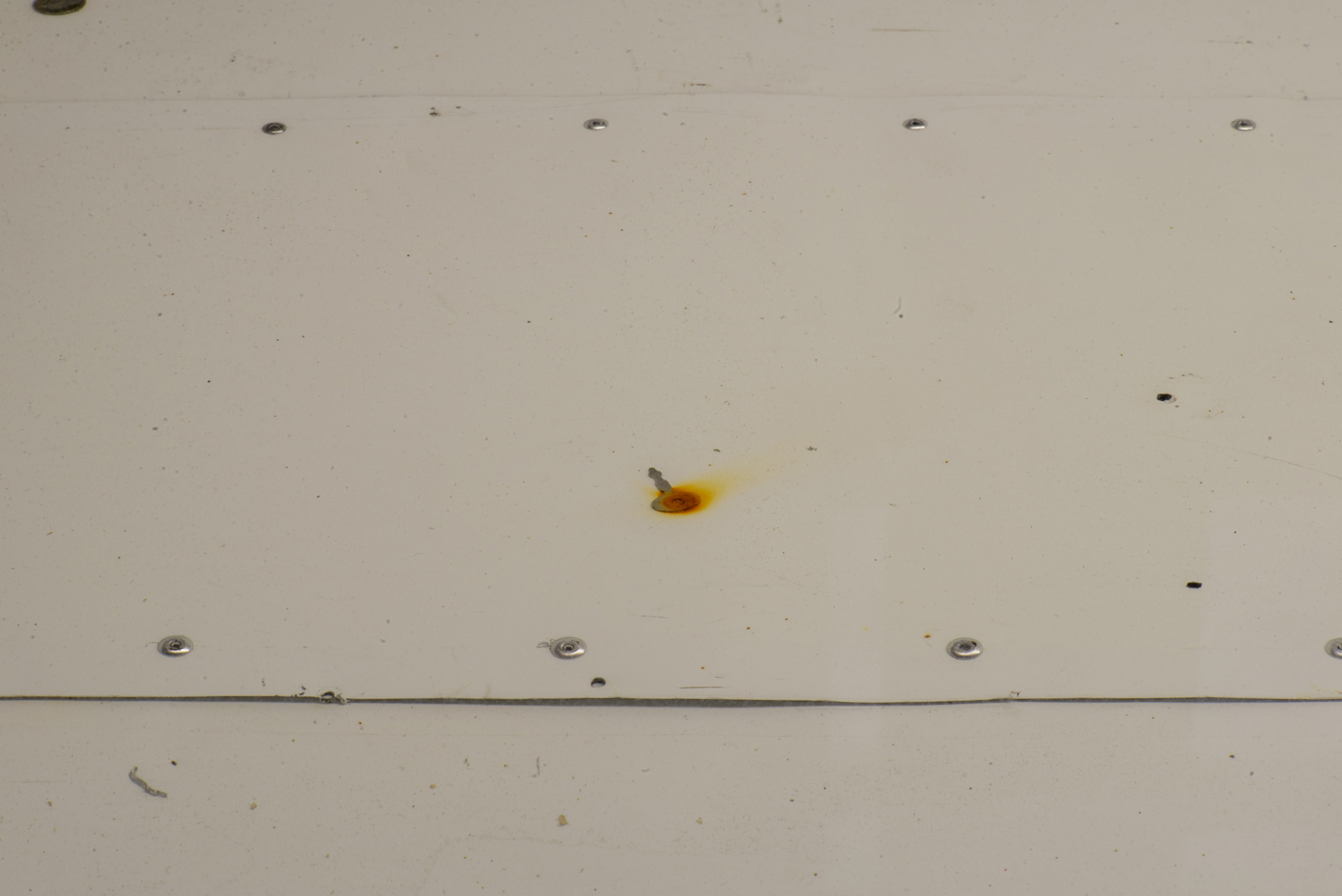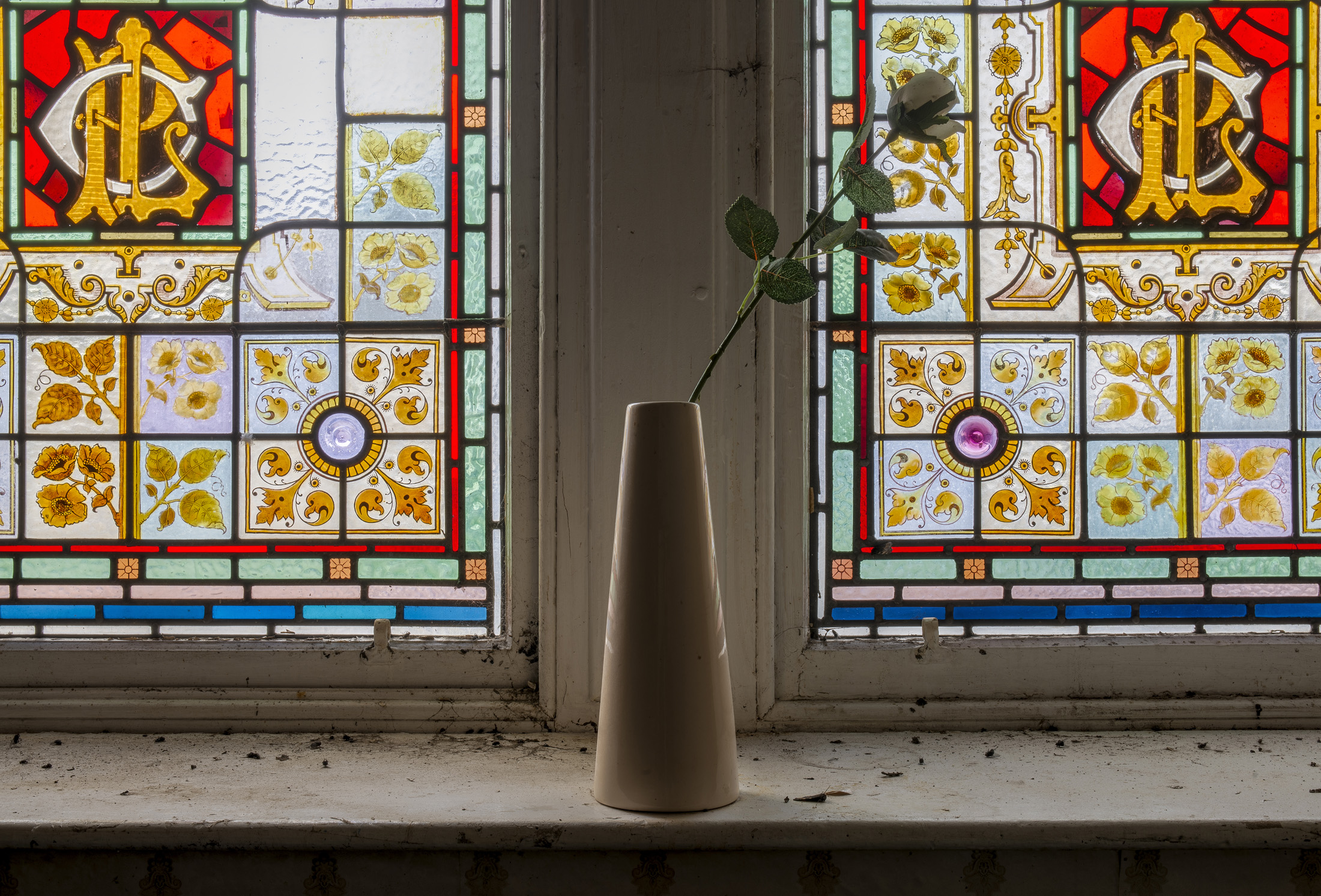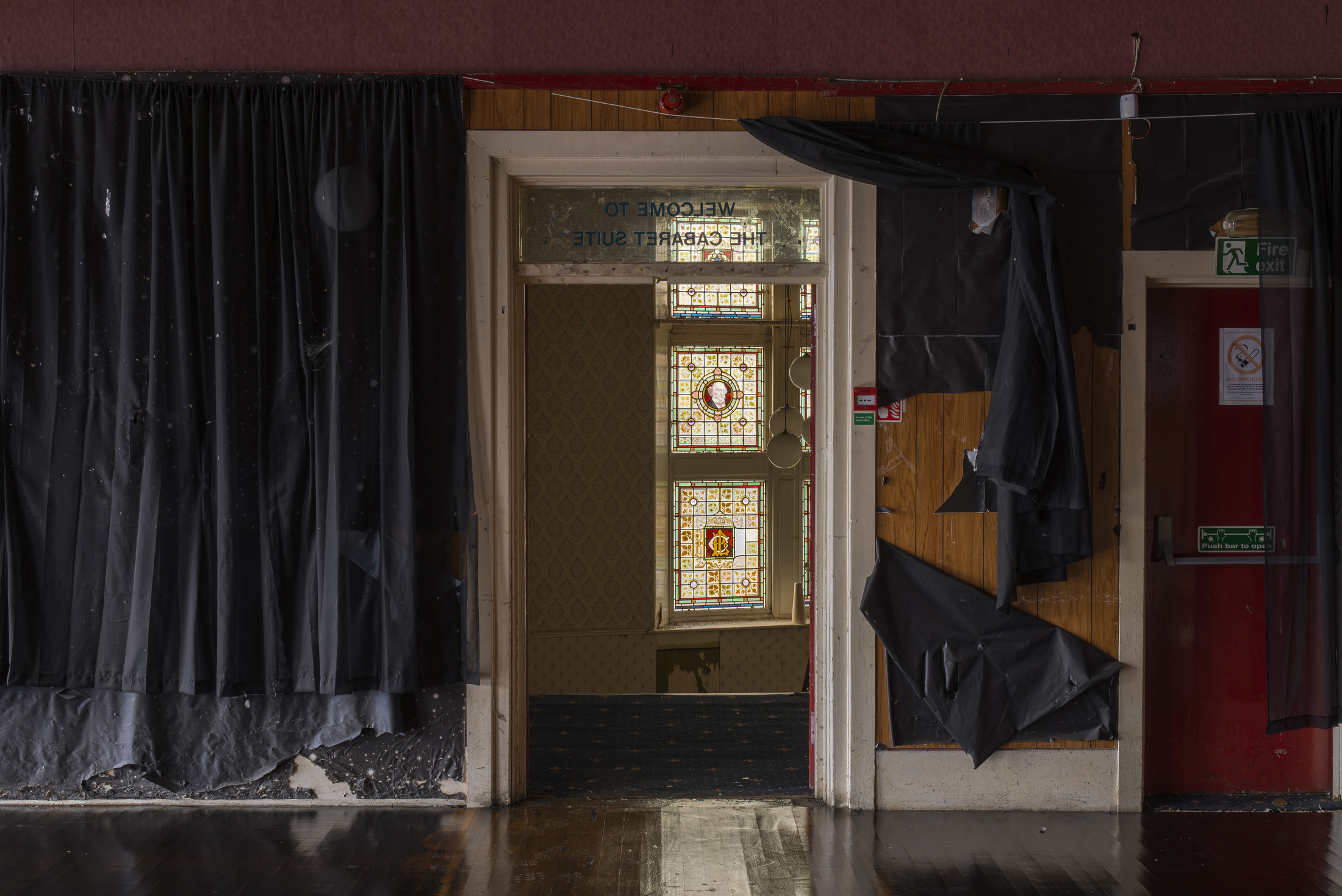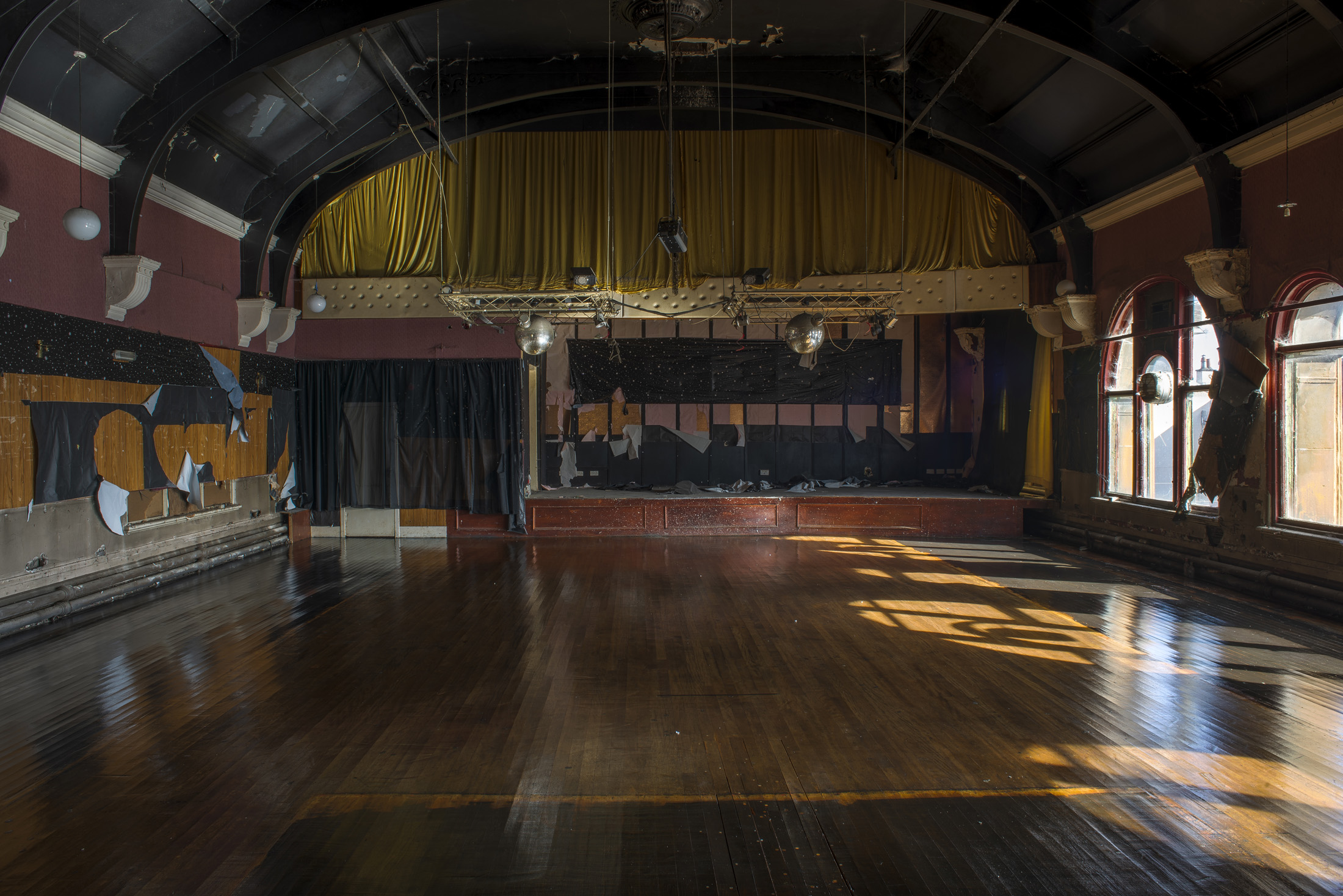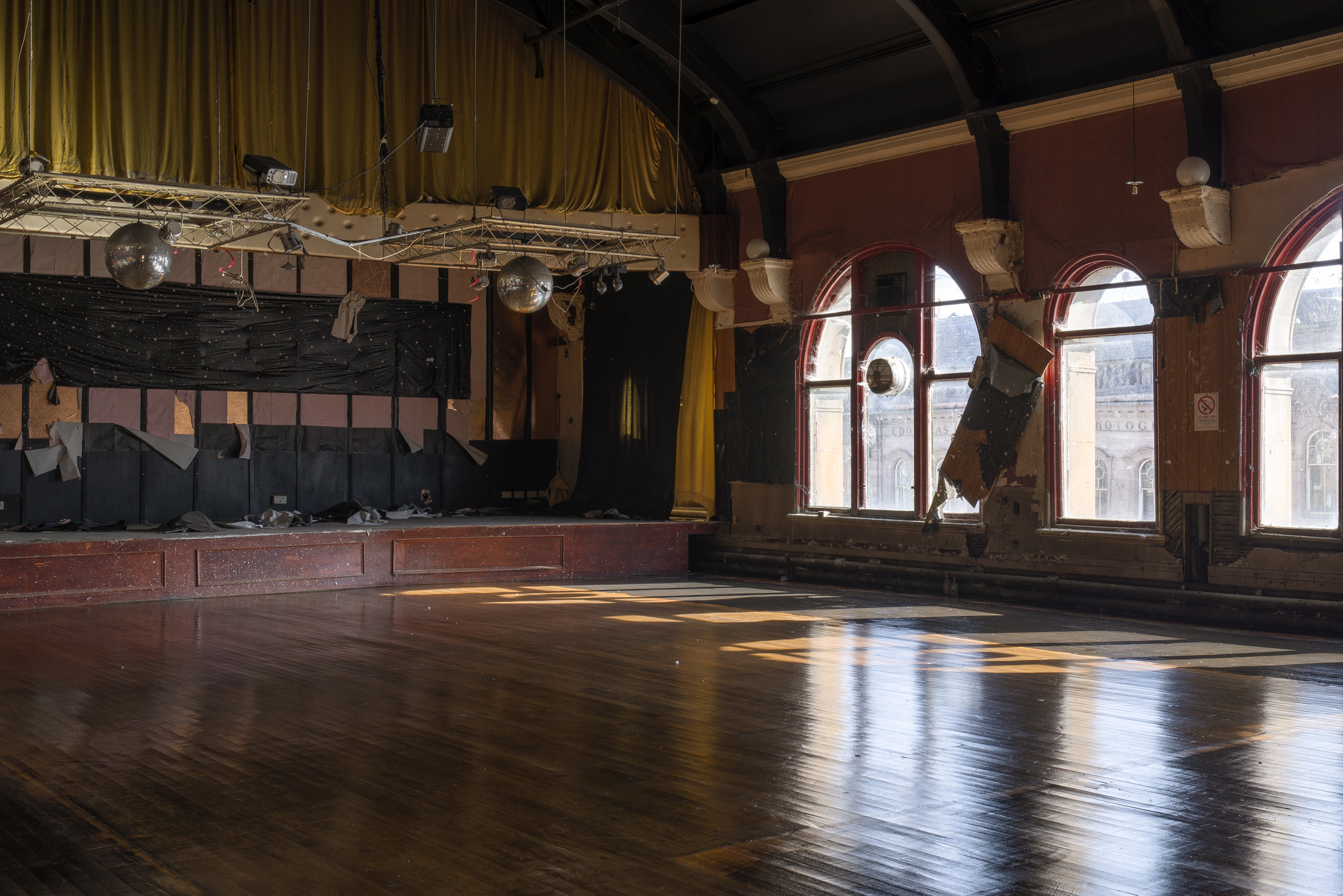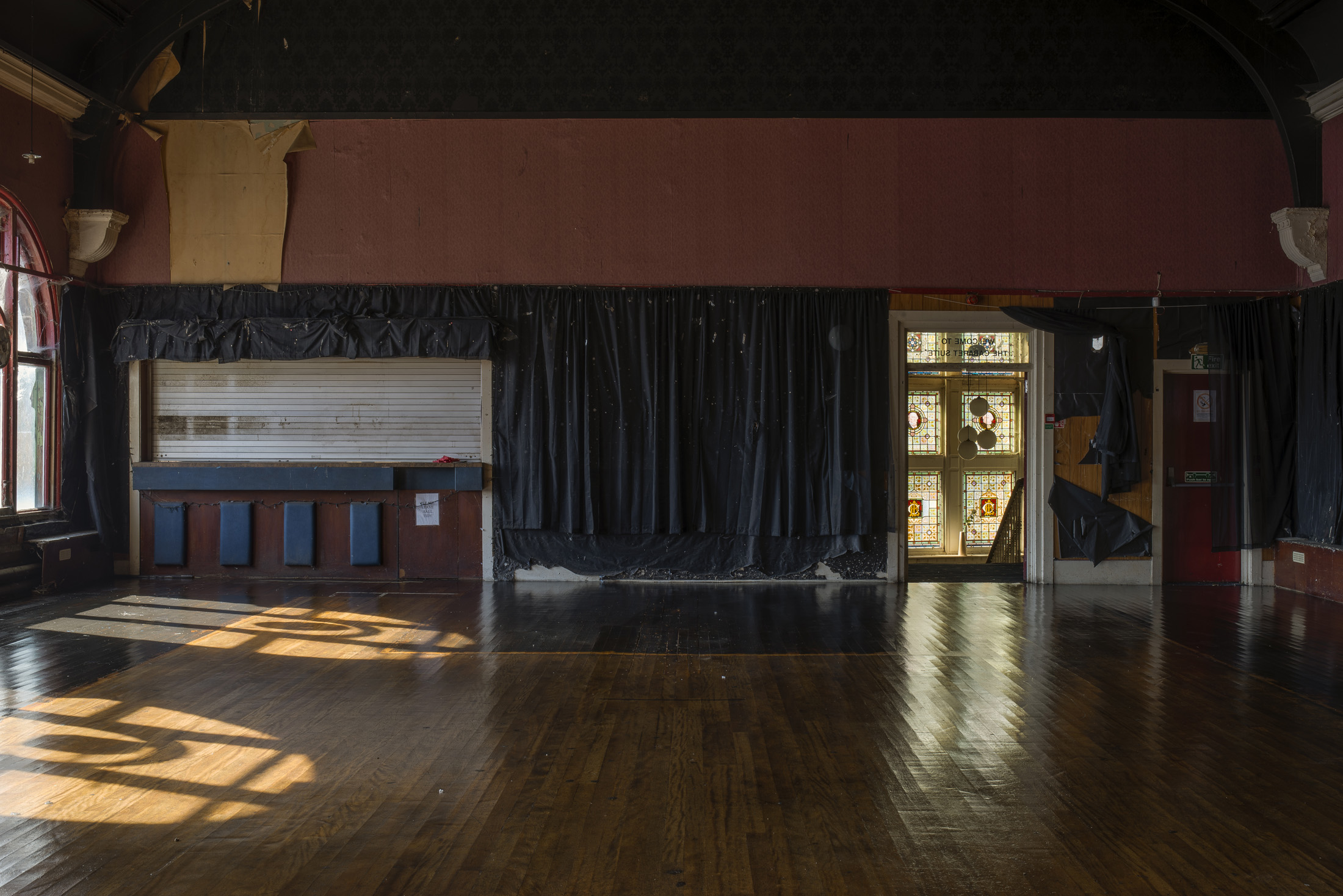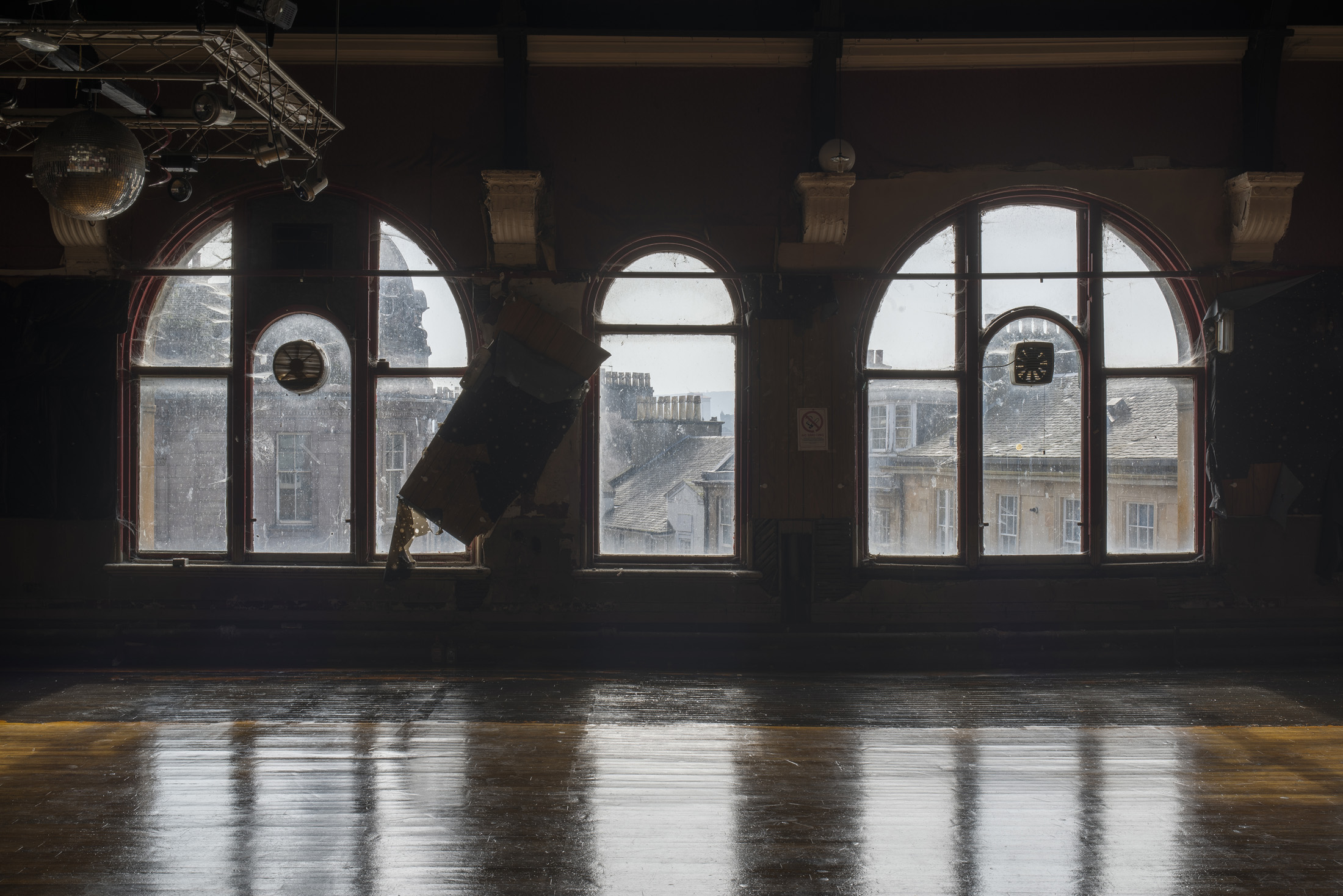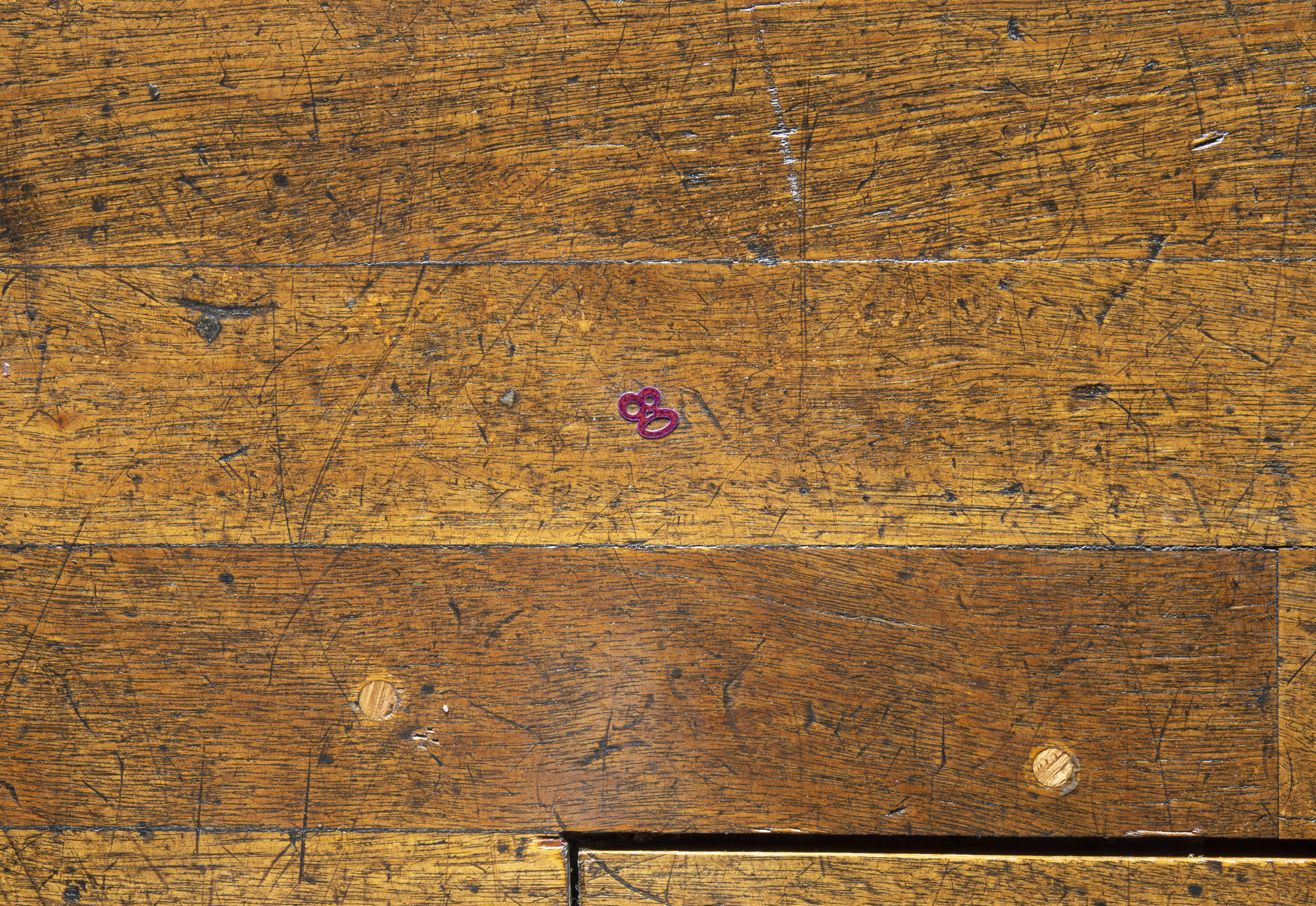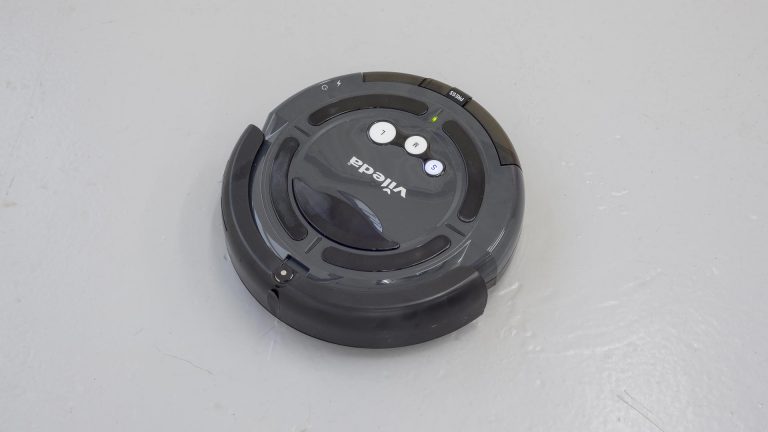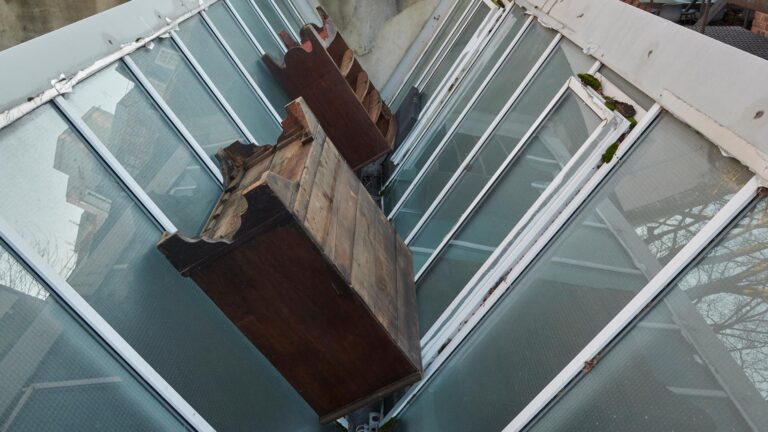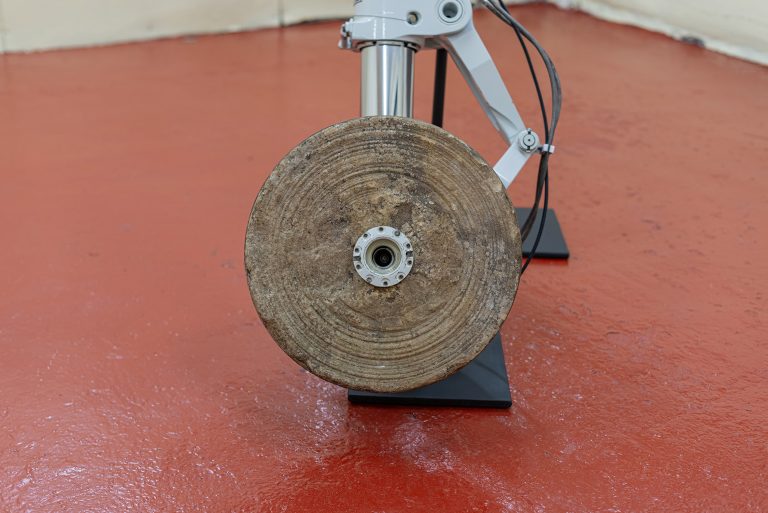Artist: Stuart Middleton
Exhibition title: Paisley Liberal Club
Venue: David Dale Gallery (Off-Site Show at Paisley Liberal Club), Glasgow, UK
Date: March 18 – April 23, 2022
Photography: all images copyright and courtesy of the artist and David Dale Gallery, Glasgow
1) Over the last 2 months I’ve been coming to Paisley Liberal Club from Glasgow on a more or less a daily basis. Built in 1886 the club remained open to members and guests up until 2015. It appears to have had its entertainment licence revoked at this point. Acquired by its current owner at an unknown point, it has been unoccupied since, with no clear plan for its future use, redevelopment or restoration.
2) Real estate is a piece of land plus any natural or artificial improvements that are attached or have been added. Natural attachments are part of the land and include trees, water, valuable mineral deposits, and oil. Artificial improvements include buildings, pavements, and fences. At Paisley Liberal Club the artificial improvement to the land is in a predicament; too dilapidated to function but too expensive to restore, it exists in an extended state of collapse. When maintenance ceases things fall apart fairly predictably. The value that persists is the footprint, the location, the land itself. There is material value present via reclamation; hardwood floors and banisters, some fixtures, and fittings etc, but give the plaster a poke and you will see the building isn’t far off earth in many places.
3) Usually, earthworks utilise material of the site, they tend not to bring much from elsewhere but rather reconfigure or rearrange matter that’s already present. Earthworks often work with light in a very material way. They have drawn attention to the sun through alignment, framing sections of sky, attracting naturally occurring electrical charges. They have channelled other immaterial elements or resources such as water, wind, temperature and even animals.
4) When we got access to the building, there was no power. It had been disconnected from the grid and there was no way that we could get it recommissioned without completely overhauling the wiring, something impossible for us to do. After further investigation we were surprised to find that a few, seemingly random lights were illuminating. Tracing back the wiring we came to a cupboard where a 1930’s breaker board was installed, still drawing power from somewhere. This phenomenon is known as a ghost supply, unbillable to anyone, written off by the provider and left to dwindle. It is likely the supply is finite, the source generating it now decommissioned. This power source has been made safe and redirected to certain lights and appliances around the building. We have also used it to power tools and cleaning equipment over the time we have been here.
5) When restoring art works, conservators use a technique called a separation layer. This is a layer of clear varnish that is chemically different to the original paint or coating. It is applied on top of the object prior to any restoration work being carried out, the idea being that it can be dissolved to reveal the original finish intact. In a sense, the separation layer protects the painting from its retouching. It stops the actions of the present getting confused with those of the past.



